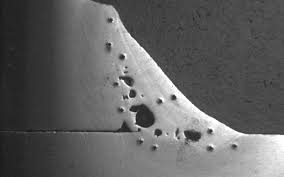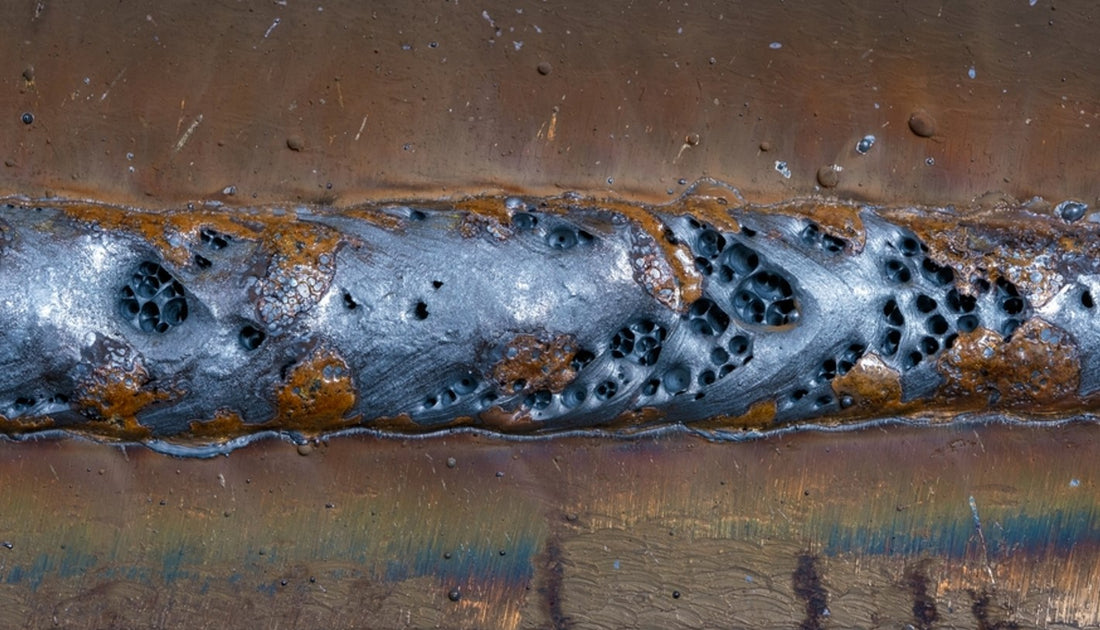Untangling the Mystery of Porosity in Welding: Tips for Reducing Flaws and Making Best Use Of Quality
In the complex world of welding, porosity continues to be a relentless difficulty that can considerably impact the quality and honesty of welded joints. As we delve into the midsts of porosity in welding, discovering the secrets to its avoidance and control will certainly be critical for professionals looking for to grasp the art of premium weldments.
Comprehending Porosity in Welding
Porosity in welding, a typical issue run into by welders, describes the existence of gas pockets or gaps in the welded product, which can compromise the integrity and high quality of the weld. These gas pockets are typically caught during the welding procedure as a result of various factors such as improper shielding gas, contaminated base products, or wrong welding parameters. The development of porosity can weaken the weld, making it prone to breaking and rust, eventually bring about architectural failures.
By recognizing the importance of preserving appropriate gas protecting, guaranteeing the tidiness of base materials, and enhancing welding setups, welders can dramatically lower the chance of porosity development. Generally, a detailed understanding of porosity in welding is necessary for welders to create high-grade and durable welds.

Typical Sources Of Porosity
When evaluating welding processes for possible high quality concerns, understanding the typical reasons of porosity is vital for keeping weld integrity and stopping architectural failures. Porosity, defined by the visibility of cavities or spaces in the weld steel, can significantly compromise the mechanical properties of a welded joint.
An additional widespread root cause of porosity is the presence of wetness and impurities externally of the base steel or filler material. When welding products are not effectively cleaned or are exposed to high levels of humidity, the vaporization of these pollutants during welding can develop gaps within the weld bead. Furthermore, welding at incorrect specifications, such as exceedingly high traveling speeds or currents, can create too much disturbance in the weld swimming pool, capturing gases and creating porosity. By addressing these common reasons via correct gas shielding, product preparation, and adherence to optimum welding parameters, welders can minimize porosity and boost the top quality of their welds.
Methods for Porosity Avoidance
Executing reliable preventative measures is crucial in lessening the event of porosity in welding processes. One technique for porosity prevention is guaranteeing correct cleansing of the base metal prior to welding. Impurities such as oil, grease, rust, and paint can cause porosity, so complete cleansing making use of ideal solvents or mechanical methods is crucial.

Using high-grade filler materials and shielding gases that are appropriate for the base steel and welding procedure can considerably minimize the danger of porosity. In addition, maintaining proper welding specifications, such as voltage, present, take a trip rate, and gas circulation price, is crucial for porosity avoidance.
Furthermore, employing proper welding methods, such as preserving a constant traveling speed, electrode angle, and arc size, can help avoid porosity (What is Porosity). Sufficient training of welders to ensure they comply with best practices and high quality control procedures is also vital in lessening porosity flaws in welding

Finest Practices for Quality Welds
Guaranteeing adherence to industry criteria and correct weld joint prep work are fundamental aspects of attaining continually top notch welds. Along with these fundamental actions, there are a number of best techniques that welders can carry out to even more enhance the top quality of their welds. One secret practice is maintaining correct tidiness in the welding location. Pollutants such as oil, grease, corrosion, and paint can negatively affect the high quality of the weld, leading click to investigate to issues. Completely cleansing the workpiece and bordering area prior to welding can assist minimize these problems.
An additional ideal method is to meticulously select the appropriate welding parameters for the certain this contact form materials being signed up with. Correct criterion choice guarantees ideal weld penetration, blend, and general high quality. Using high-quality welding consumables, such as electrodes and filler steels, can dramatically influence the final weld quality.
Importance of Porosity Control
Porosity control plays an essential role in making certain the stability and high quality of welding joints. Porosity, characterized by the visibility of tooth cavities or voids within the weld steel, can substantially compromise the mechanical homes and structural stability of the weld. Excessive porosity damages the weld, making it a lot more susceptible to fracturing, rust, and overall failure under operational tons.
Reliable porosity control is important for recommended you read preserving the desired mechanical properties, such as strength, ductility, and strength, of the bonded joint. What is Porosity. By reducing porosity, welders can enhance the general quality and integrity of the weld, making sure that it meets the performance requirements of the intended application
Moreover, porosity control is essential for attaining the preferred aesthetic look of the weld. Too much porosity not only compromises the weld yet additionally interferes with its visual allure, which can be important in sectors where aesthetic appeals are necessary. Appropriate porosity control strategies, such as using the right shielding gas, regulating the welding criteria, and guaranteeing appropriate cleanliness of the base materials, are important for creating high-quality welds with minimal flaws.

Verdict
In verdict, porosity in welding is a common flaw that can compromise the top quality of the weld. By comprehending the causes of porosity and executing appropriate avoidance strategies, welders can reduce problems and attain higher high quality welds. It is vital to control porosity in welding to make sure the integrity and strength of the end product. Applying finest practices for porosity control is critical for attaining optimum welding results.